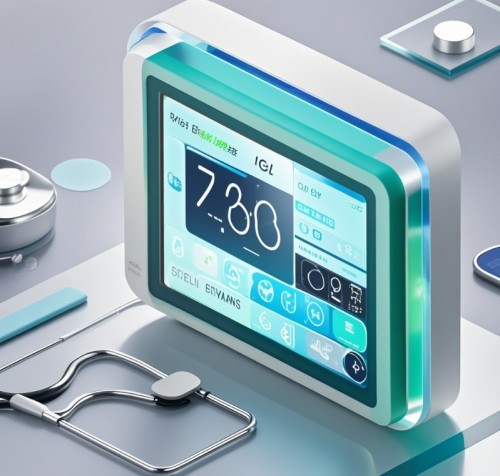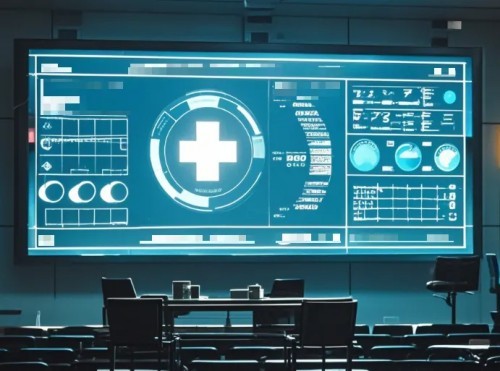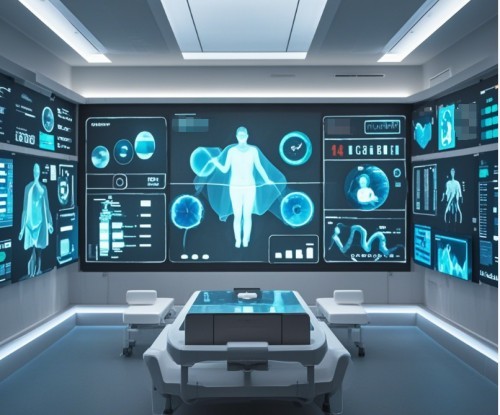2024-11-29
From Limitations to Breakthroughs: Exploring the Potential of LED Displays Empowering Smart Medical Displays
As China enters a phase of "moderate aging," the demand for medical services has significantly increased. The rising need for personal health management and professional medical services has driven the development of the medical display market. At the same time, improvements in policies for building medical service systems have also brought new opportunities to the medical display market. As a major segment in the field of display technology, LED displays are explored in this article for their potential applications in medical display.
As China enters a phase of "moderate aging," the demand for medical services has significantly increased. The rising need for personal health management and professional medical services has driven the development of the medical display market. At the same time, improvements in policies for building medical service systems have brought new opportunities to the medical display market. As a major segment in display technology, LED displays are explored in this article for their potential applications in the medical display field.

1. Current Limitations of Medical LCD Displays
Currently, LCD displays are widely used in the medical display field, but long-term use has revealed some unavoidable issues.
In the internet era, hospitals have a strong demand for large-size, high-definition medical display systems for diagnosis, image reading, and teaching. However, due to technological limitations, a single LCD screen rarely exceeds 100 inches. Multi-unit splicing results in 0.5-4mm gaps, reducing image display accuracy. Additionally, differences in color and brightness decay among units lead to poor image consistency after long-term use.
2. Advantages of LED Displays Entering the Smart Medical Field
1. Unlimited Size
LED display technology can easily meet the demand for large-size, high-definition medical display systems, providing a broad display space for medical imaging. This helps doctors observe image details clearly and comprehensively, improving diagnostic accuracy.
2. Development of Small Pixel Pitch, Higher Image Quality
With the development of small-pitch LED displays, image quality has become increasingly refined. LED displays ensure high-quality presentation of medical images, enabling more precise display of key information such as subtle lesions, strongly supporting medical diagnosis.
3. Seamless Splicing
Compared to LCD splicing screens, LED displays overcome the gap issue, achieving perfect image presentation, avoiding information loss and visual interference, and enhancing medical display effects.
4. Point-by-Point Calibration
Technologically, LED displays effectively solve issues of uneven color and brightness after long-term use, ensuring image consistency and providing stable and reliable display support for medical work.

3. Potential Applications of LED Displays in Smart Medical Field
1. Information Display and Guidance
In outpatient halls, LED displays show department distribution, doctor schedules, registration processes, etc., and play medical science knowledge and hospital introductions in waiting areas. LED displays have wide viewing angles, allowing clear visibility from different angles, suitable for environments with high foot traffic and diverse viewing angles like outpatient halls and waiting areas. Moreover, their high brightness ensures clear information display even in brightly lit halls.
2. Remote Medical Consultation
LED displays serve as remote consultation terminal devices for viewing medical records, examination reports, and medical images, as well as conducting remote training and education. With high color fidelity, LED displays accurately present medical image color information, aiding doctors in diagnosis. Their short response time and fast image switching prevent ghosting during dynamic image display or surgical demonstrations in remote consultations.
3. Medical Image Display
LED displays clearly and accurately present medical images such as X-rays, CT scans, and MRIs, assisting in surgical navigation and teaching. They offer extremely high contrast and clarity, clearly showing subtle differences and details in images, which is crucial for medical diagnosis and surgical operations. Additionally, seamless splicing is possible, providing advantages for large-size image display and complete presentation of complex medical images.
4. Medical Command and Dispatch
In emergency command centers, LED displays integrate emergency information, and in hospital management command centers, they show hospital operation status. LED displays can be customized to large sizes to meet the extensive display needs of command centers. Their stability allows continuous long-term operation, fulfilling the uninterrupted operation requirements of medical command and dispatch.
5. Health Science Education and Promotion
LED displays play health knowledge content in hospital public areas and community health service centers. Energy-efficient LED displays consume low power and can run continuously, suitable for ongoing content playback in public places. Their strong durability withstands frequent contact, reducing maintenance costs.
6. Medical Institution Image and Culture Building
LED displays show promotional videos and specialty department introductions at hospital entrances and outdoor areas, and display hospital cultural activities indoors. Their wide brightness adjustment range ensures clear visibility under strong outdoor light while allowing brightness reduction indoors to save energy and avoid glare. Additionally, flexible LED display technology enables creative forms such as irregular splicing, better supporting hospitals in showcasing unique images and culture.

LED displays already have many practical applications in the smart medical field. With the development of small-pitch micro LED, they show great potential in refined high-end medical equipment. In the future, LED displays will play a significant role in various medical scenarios, contributing to the development of smart healthcare!
Next: LED Display: Collaboratively Building an Internet + Smart Fire Safety Platform
Latest News


